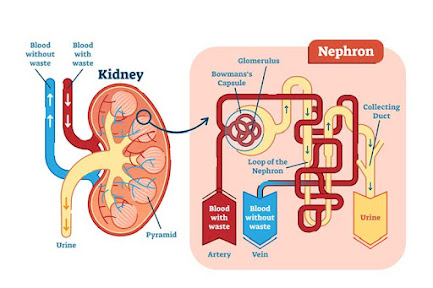Spinal Cord
The spinal cord is in fact a tubular bundles of nerves. It starts from brain stem and extends to lower back. Like, brain, spinal cord is also covered by meninges. The vertebral column surrounds and protect spinal cord.
The outer region of spinal cord is made of white matter (containing myelinated axons). The central region is butterfly shaped that surrounds the central canal. Its made of grey matter (containing neuron cell bodies).
31 pairs of spinal nerves arise along spinal cord. These are " Mixed Nerves" because each contains axons of both sensory and motor neurons.
At the point where a spinal nerve arises from spinal cord, There are two roots of spinal nerve.
- The dorsal root contains sensory axons and ganglion where cell bodies are located.
- The ventral root contains axons of motor neurons.
- It serves as a link between body parts and brain. Spinal cord transmits nerve impulses from body parts to brain and from brain to body parts.
- Spinal cord also acts as coordinator, responsible for some simple reflexes.







.png)




.png)